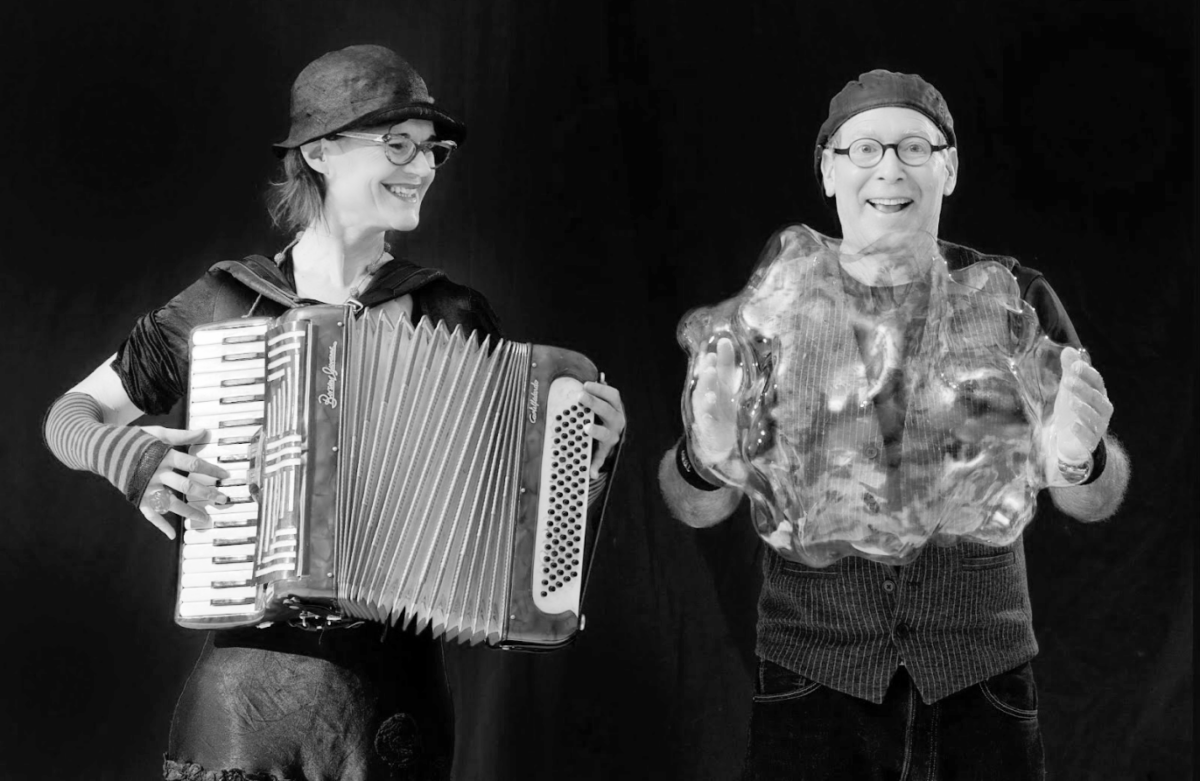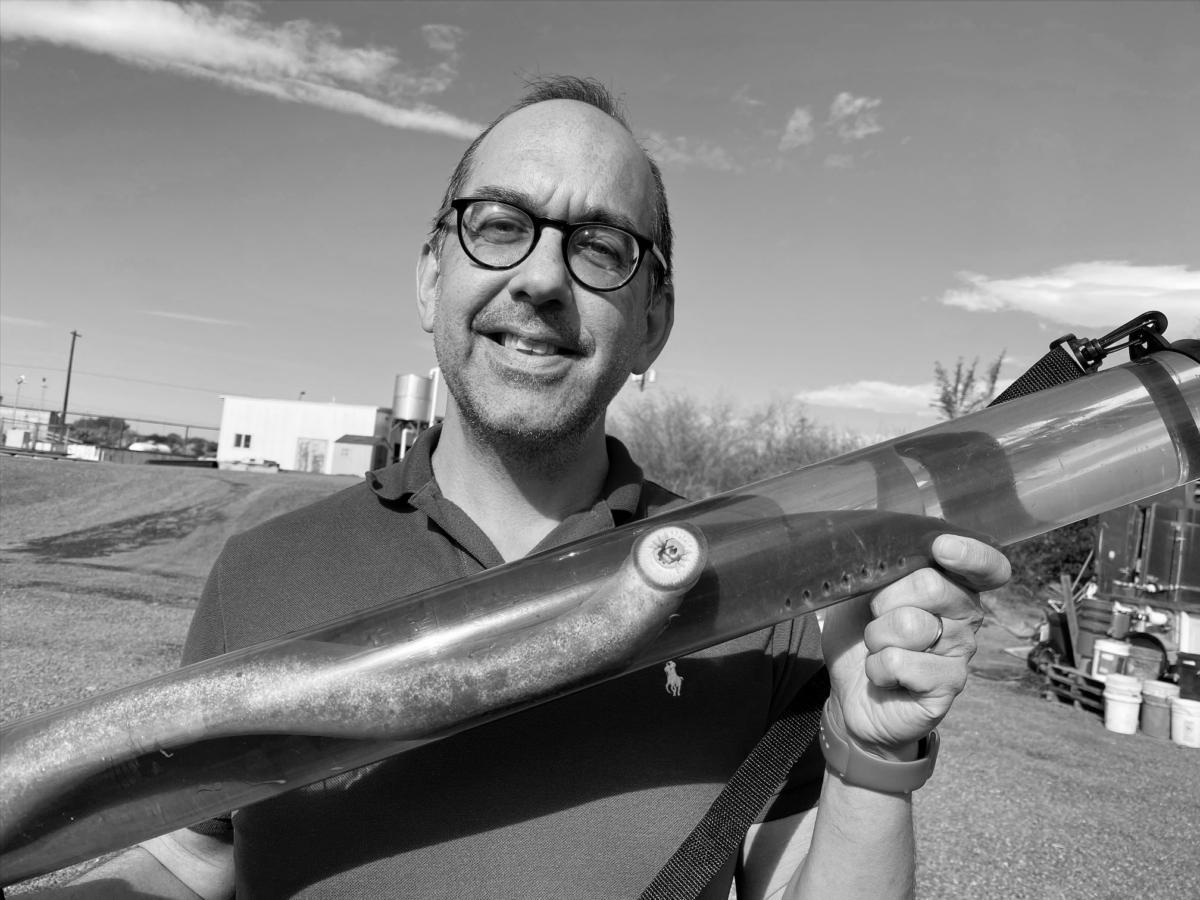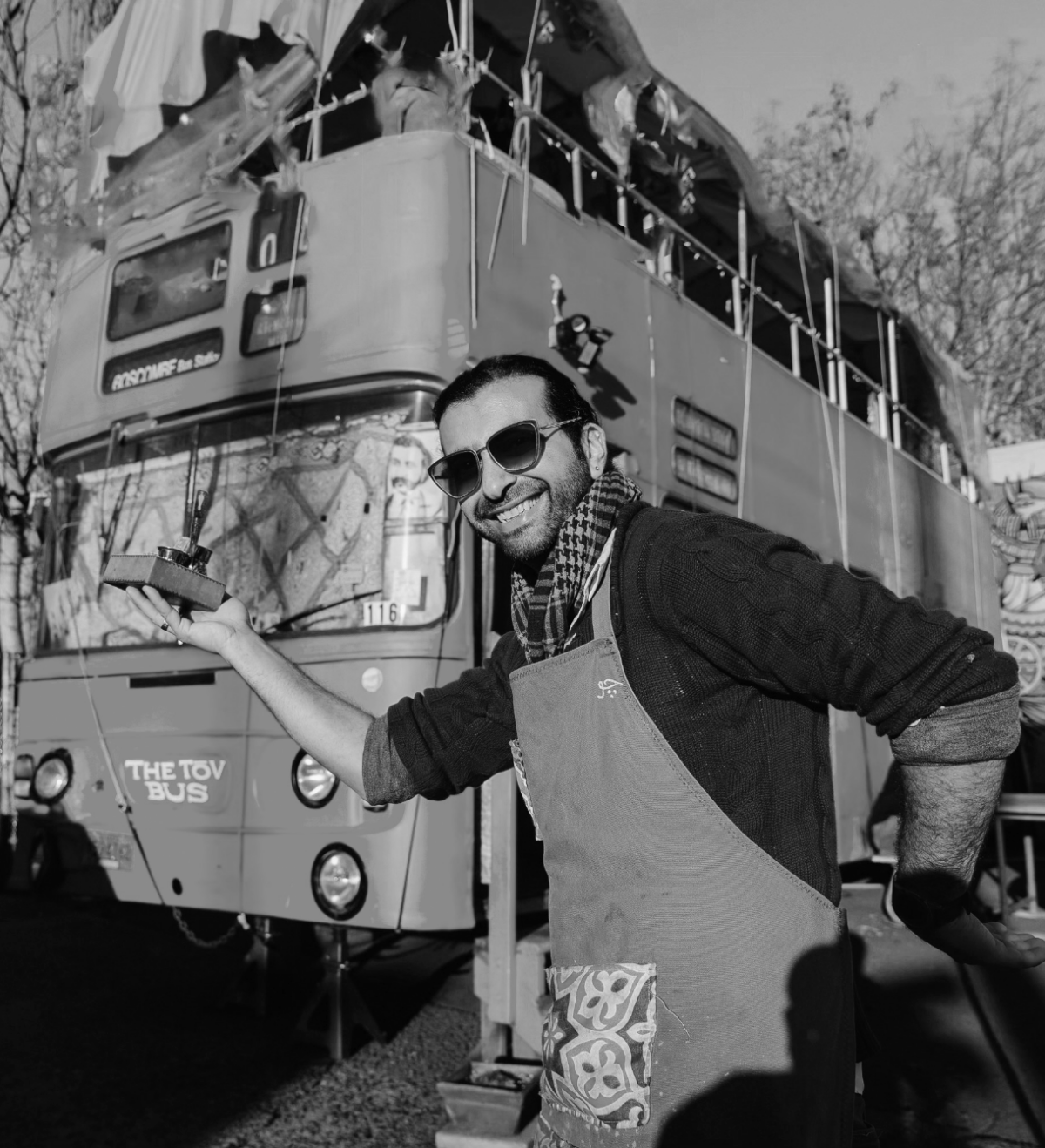Q&A with Louis Pearl and Jetty Swart
How did an accomplished accordian player and singer from the Netherlands and “the Amazing Bubbleman” from San Francisco meet and find their way to Portland? Jetty Swart (her stage name is Jet Black Pearl) and Louis Pearl (who your kids may know simply as The Bubbleman) are a creative power couple who have lived in Sunnyside since 2014. We talked to them about how they met, what they love about Portland, and how one becomes a bubbleman.
Where did you meet?
Jetty: We met in 2009 at the Edinburgh Fringe Festival. I had a friend who was performing there and I went to visit her.
Louis: I was performing there. I had lunch at a little terrace outside and I had just done two shows in a very hot theater. I was hungry and tired and there were no empty tables. There were three women sitting at a table for four, and I said, “Is anybody sitting in that seat?”
Jetty: I said, “I don’t see anybody, do you?” My friend started selling her show to Louis, but instead we all ended up going to his show the next day.
Louis: And I selected Jetty out of the audience and put her in a bubble…and now we’re married.
How did you choose Portland?
Louis: We got married and Jetty came to my house in Sebastopol. And I loved my house. I had two acres, a redwood forest in the backyard, and a hot tub in the forest. But Jetty was from the Netherlands. She’s a European city dweller.
Jetty: Yeah, I want to go on my bike to a store.
Louis: She said, I’ll move to America to live with you, but I’m not ready to retire. So we decided to sell my house and move closer to San Francisco. And here we are, because once you start looking in San Francisco, it’s crazy. We looked for 18 months and made 13 offers – all over the asking price. We finally got an offer accepted on a house in Oakland, but I found out there’d been two shootings there in the last year, so I just nixed it. And we came to Portland.
But why Portland?
Jetty: I had been to Portland a couple of times. Do you remember Myspace? One day, this accordion guy wrote me a message: Hey, if you’re ever in the United States, come to Portland and visit me. And so I did. Every time I’d visit Louis in San Francisco, I would come to Portland because I liked it. I thought: this is a good town—lots of music going on.
Louis: I love it. It’s taken me ten years, but I really love it here. Jetty got me into riding bikes a lot. I always rode a bike, but living with a Dutch person—I’d say I’m going to the gym and I’d get in the car and she’d go, “You’re driving to the gym?” It makes no sense. So now I ride my bike. During the pandemic, I couldn’t go to the gym, so I would just ride up to the top of Mount Tabor—it’s a haven. I love that park on top of the mountain.
Jetty: And the houses. I love the houses—all the Craftsmans with all the colors. And the Goodfoot. And then the neighbors we got to know during the pandemic, because we would do shows.
Louis: Jetty was doing little lawncerts here on our front lawn. People would close the street and we’d bring chairs and tables and bottles of wine. We have a neighbor who is a world-class jazz pianist (Gordon Lee, a Q&A subject in Nov. 2020), who was doing concerts on his front porch. The same people would come, so that’s how we got to know a lot of people… Normally, I’m touring all the time, but during the pandemic we were just here. We went back to our roots and started busking. We’d go out on 28th and Ankeny and she’d play music and I’d make bubbles and put the hat out.
How has the American audience received your music, Jetty?
Jetty: In the beginning, I’d mostly play the French standards. That’s not what I did in France, but I thought it would be more accessible for people here because my original songs were in French and there’s nothing as annoying as playing a funny song in front of people who don’t laugh. So I fell back on the repertoire that people imagine when they think of French music, and people liked it. Then I started writing in English and I got a whole new repertoire eventually.
Louis, how does one become a professional bubbleman? Did you apprentice with someone? Are you self-taught?
Louis: I was a toy inventor. I made this toy—I had this bubble pipe in 1980 that made bubbles like that [extends hands wide]. Back then there weren’t big bubbles. I couldn’t sell the toy to any shops, so I went to Telegraph Avenue in Berkeley and I just started blowing bubbles. And people loved them.
How many people in the world have your job?
Louis: At my level, there’s only a couple. But now there’s thousands of people doing bubble shows. When I first started, there were maybe three.
When you say at your level, you mean able to be fully self-supporting through bubble income?
Louis: Oh, there’s a lot of people who are self-supporting through bubble income. But doing theater shows…
Packing theaters?
Louis: Packing theaters, yeah. Only a couple.
Devin Boone is a writer and reporter living in Sunnyside. She recently launched her own Substack, The Portland Stack, which tells stories about housing, the homelessness crisis, public safety, and the social contract. Her first story, about why it’s taking so long to get people housed, has the feel of a Chutes and Ladders game (as the housing process sometimes feels like a Chutes and Ladders game)—with beautiful illustrations by artist Ian Patrick. You can find it at portlandstack.substack.com.



